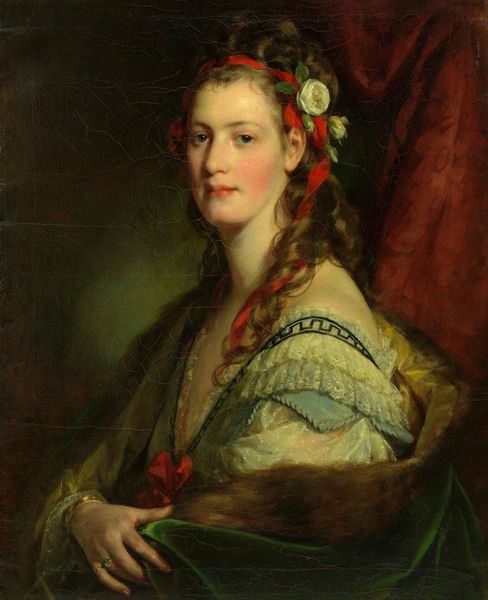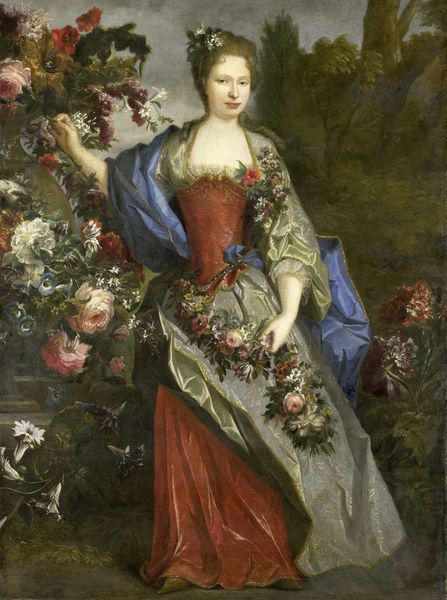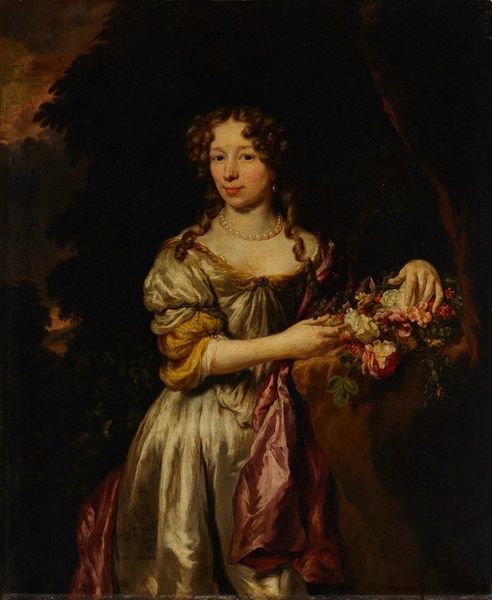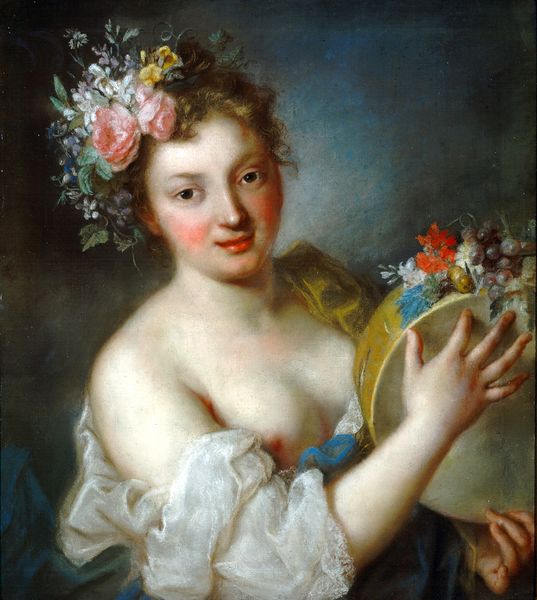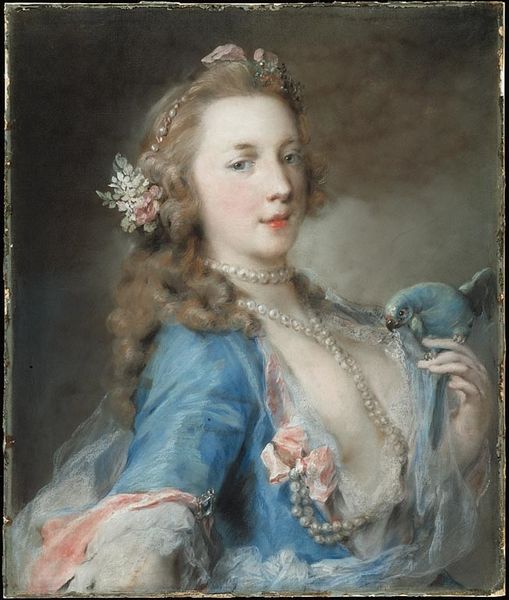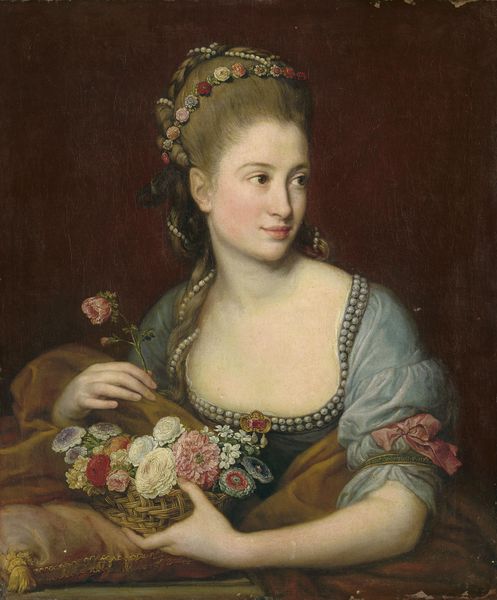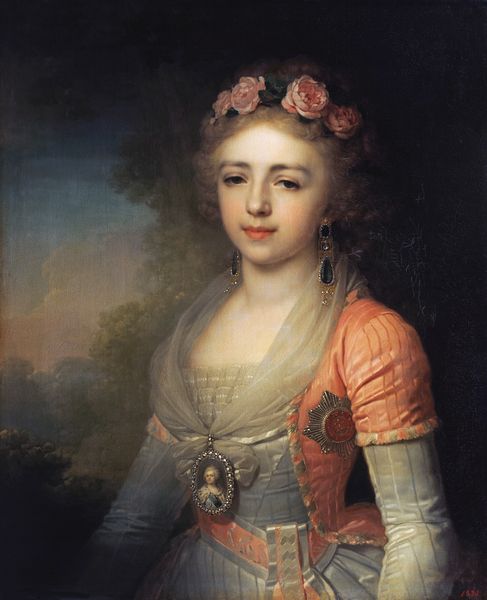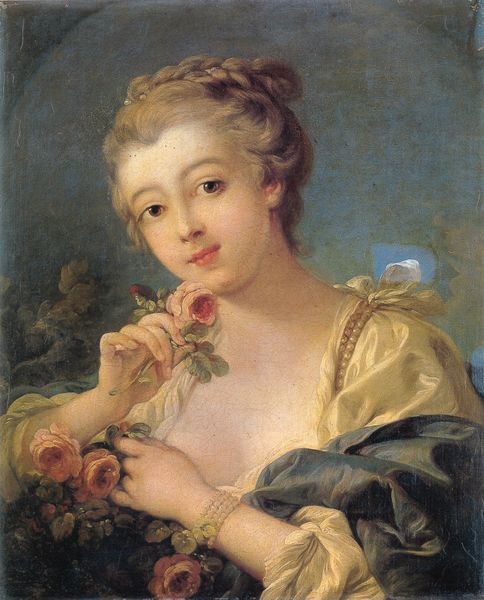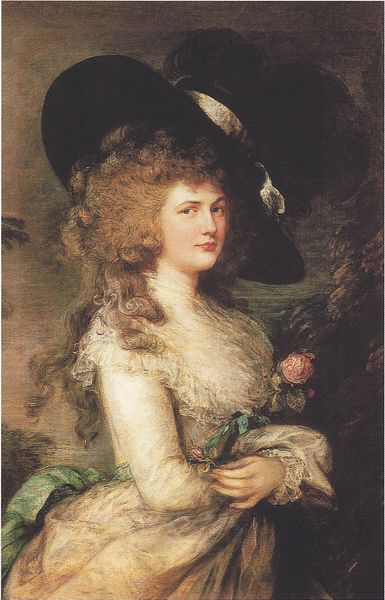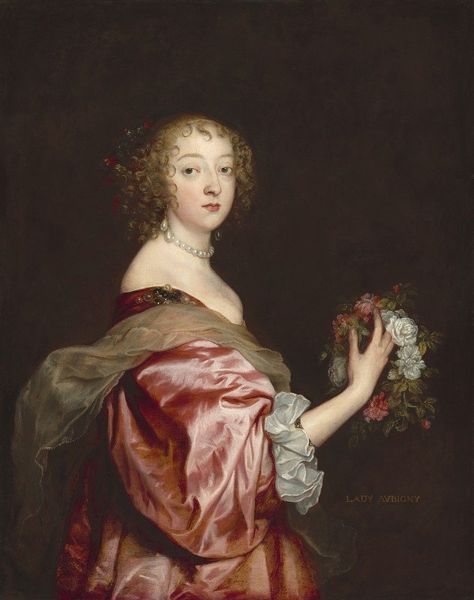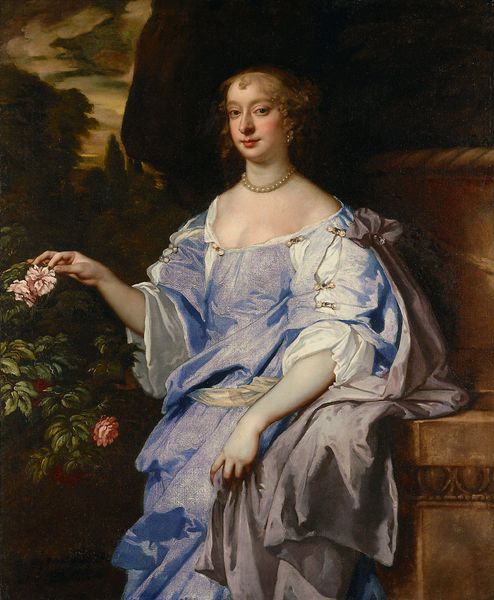
painting, oil-paint
#
portrait
#
baroque
#
fantasy art
#
dutch-golden-age
#
painting
#
oil-paint
#
figuration
#
history-painting
Dimensions: 125 x 101 cm
Copyright: Public domain
Curator: Ah yes, Rembrandt's "Flora," painted in 1634. It’s oil on canvas and currently housed at the Hermitage. Editor: It's striking! There’s something so captivating about the subject's gaze and the sheer volume of fabric in her garment. What's your read on this piece? Curator: Let's consider the materials and production. The lushness isn’t just about artistic skill; it speaks to access. High-quality pigments were costly, the canvas itself was an investment. Editor: Right, it suggests a wealthy patron. Curator: Exactly. This isn't simply a portrait; it's a performance of wealth and status, achieved through the labor of those who ground the pigments, wove the canvas, and even the sitter herself, adopting this persona. Note also the careful rendering of textures – the satin, the flowers. These details required skilled artisans. How might the perception of "high art" change when viewed through the lens of collective labor? Editor: I never really thought about all the hands involved beyond the artist! That truly recontextualizes the work. Is the subject in fact Flora, though, as in the Roman goddess? Curator: That’s part of the performance. It elevates the sitter, identifies her with nature and beauty, all within the framework of a commodity: the painting itself. It also links "Flora" to history painting which was, then, at the summit of genre hierarchy. Editor: So, it’s not just about the artistry, but the whole system that allowed its creation. That’s so insightful. Curator: Precisely. Seeing the materiality allows us to ask bigger questions about art's role in society and who truly benefits from its production and circulation.
Comments
No comments
Be the first to comment and join the conversation on the ultimate creative platform.
